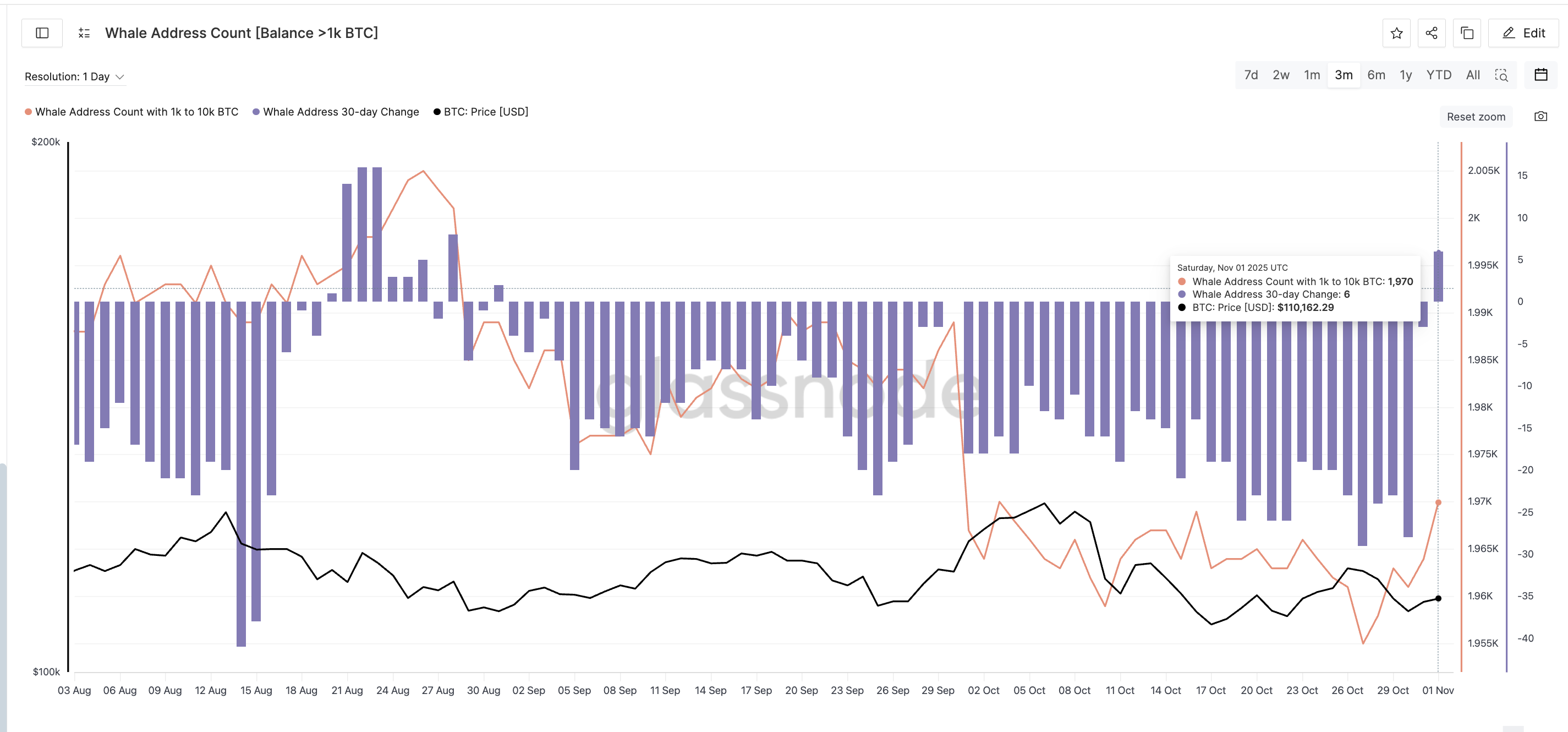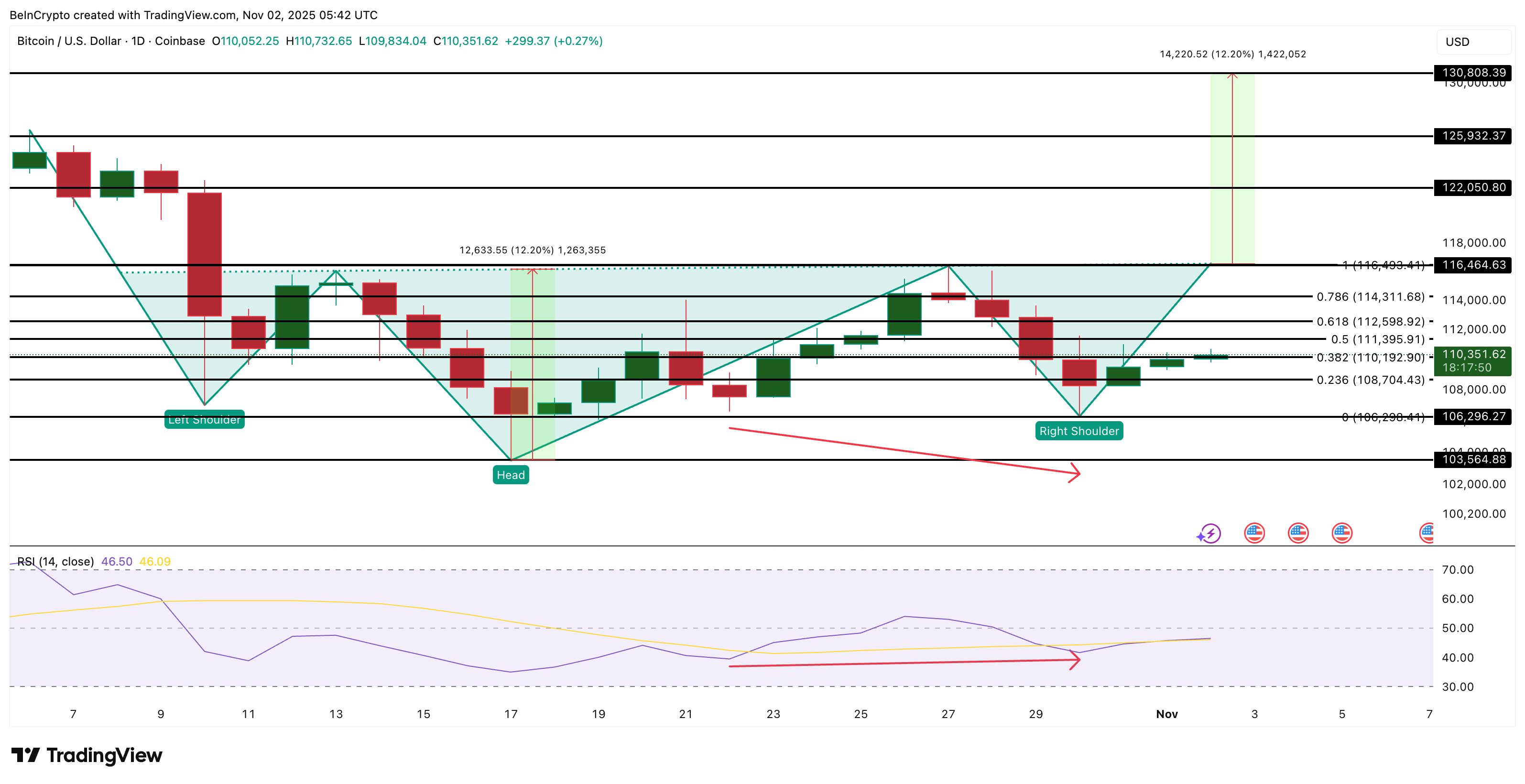
Bitcoin (BTC) started November quietly, holding steady near $110,350 after a flat 24 hours. The Bitcoin price chart still points to a possible reversal as the pattern remains intact — a structure that usually signals a major upward shift.
But despite that, BTC has failed to break out. On-chain data explains what’s keeping the move stuck and what could finally change it.
Sponsored
Cost Basis Heatmap Shows Why the Breakout Is Stuck
Bitcoin’s cost basis distribution heatmap — a chart showing where investors last bought their coins — highlights why BTC keeps struggling near current levels.
Between $110,000 and $112,500, there’s a heavy supply zone where about 434,000 BTC were last accumulated. These dense clusters often act as resistance, as many traders who bought at these levels look to sell when prices revisit their cost basis.
Want more token insights like this? Sign up for Editor Harsh Notariya’s Daily Crypto Newsletter here.
The heatmap helps identify where big pockets of holder activity are concentrated, showing which price levels act as support or resistance.

Sponsored
This particular supply wall between $110,000 and $112,500 has been capping BTC’s rally attempts for a week. In the price chart — which we’ll come to later — the same level also aligns with an important technical marker, reinforcing the validity of this range.
Until Bitcoin closes firmly above $112,500, the reversal pattern remains valid but paused, waiting for a clear catalyst.
Whales Might Be Preparing to Change That
Whales may be the ones bringing that catalyst. On-chain data indicates that large wallets holding between 1,000 and 10,000 BTC are resuming accumulation.
The 30-day whale address count change has turned positive (+6) for the first time since August 31, suggesting accumulation has resumed after months of dormancy.
Sponsored
Meanwhile, the total number of whale addresses dipped to a three-month low on October 27 but has been climbing since, now sitting around the same level last seen on October 3.

This increase shows renewed confidence from big players, a trend that often appears before price breakouts. The dashboard tracking these wallets also includes exchange, ETF, and custodian addresses, giving a broad view of institutional activity.
If this steady rise continues, it could help BTC absorb the selling pressure around $112,500, setting the stage for a potential breakout.
Sponsored
BTC Price Chart: Bullish Setup, Waiting for a Trigger?
Technically, Bitcoin still trades inside a clear inverse head and shoulders formation. A daily close above $116,400 would confirm the breakout, paving the way for targets at $122,000, $125,900, and $130,800.
Adding to this bullish setup, the Relative Strength Index (RSI) — a tool that measures buying and selling strength — shows a bullish divergence.
Between October 22 and October 30, Bitcoin’s price made lower lows while RSI made higher lows. This move often signals a trend reversal and the start of upward momentum.
Please note that on the BTC price chart, $112,590 is the key resistance level. This level validates the breakout-stalling theory pushed forth by the cost basis heatmap. For BTC, this $112,500-$112,590 zone might be the most crucial one in the near-term.

However, if Bitcoin breaks below $106,200, the breakout structure that remains intact may begin to lose shape. A further drop under $103,500 would invalidate the entire bullish pattern, confirming that sellers have regained full control.

